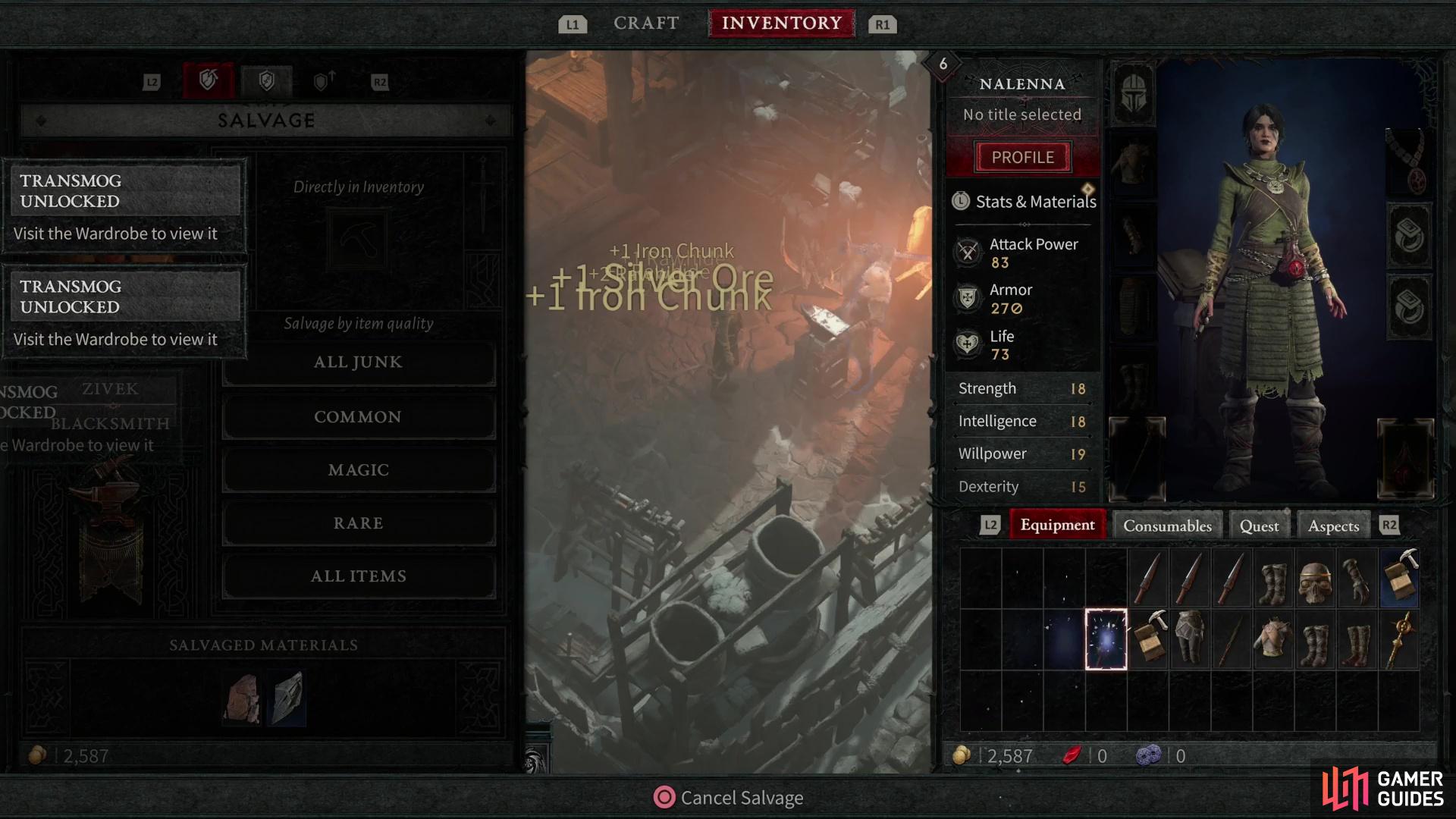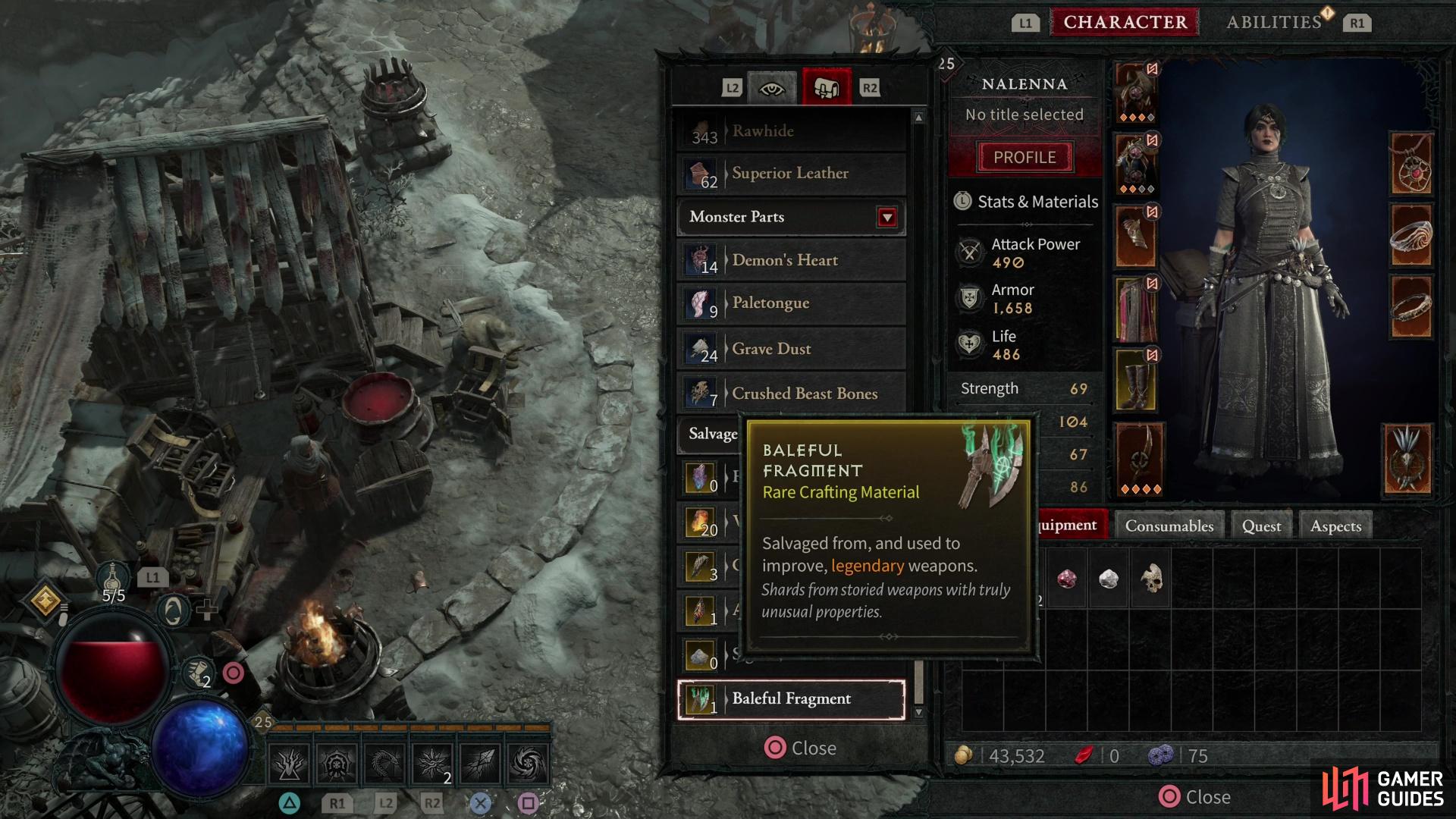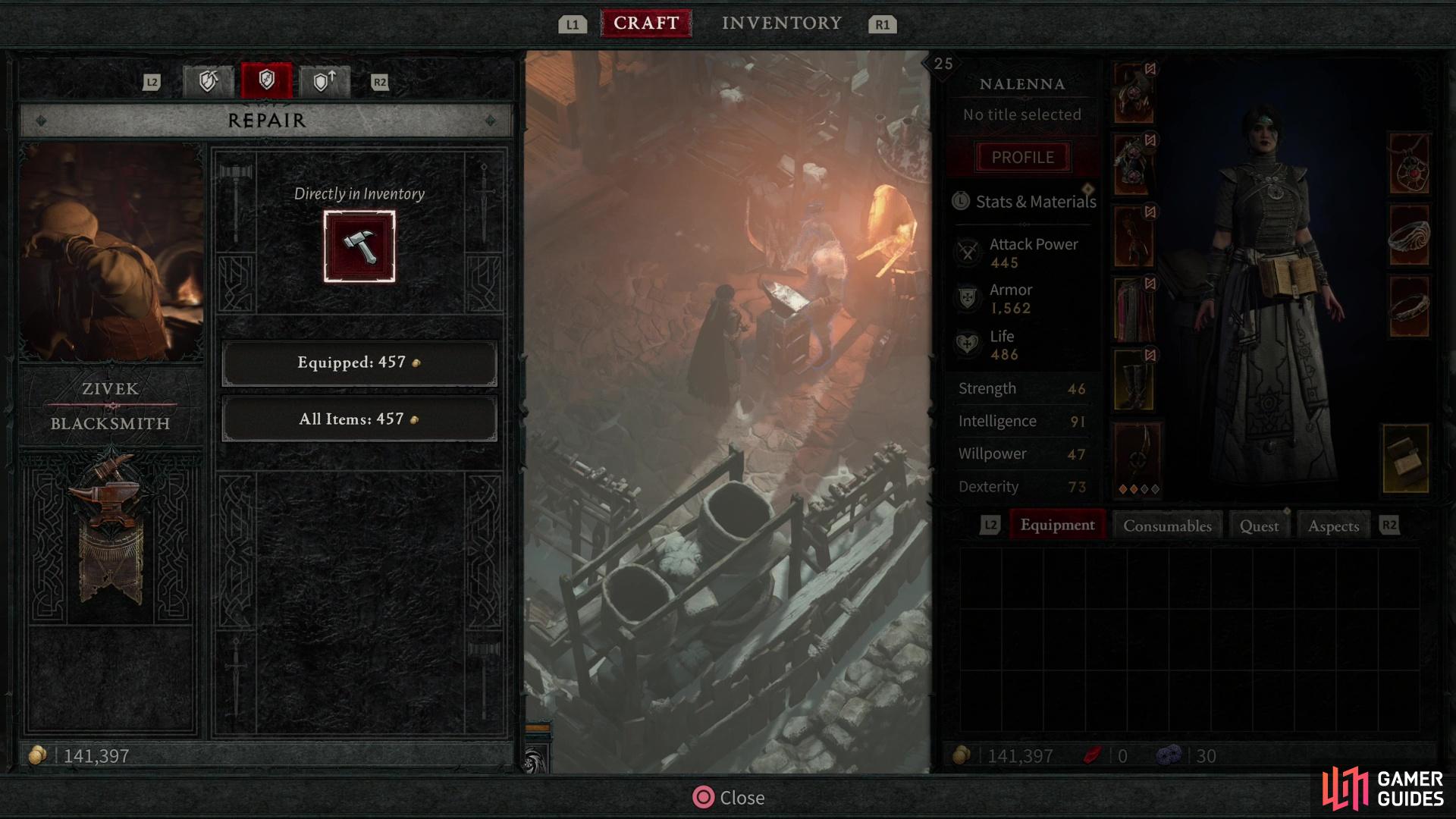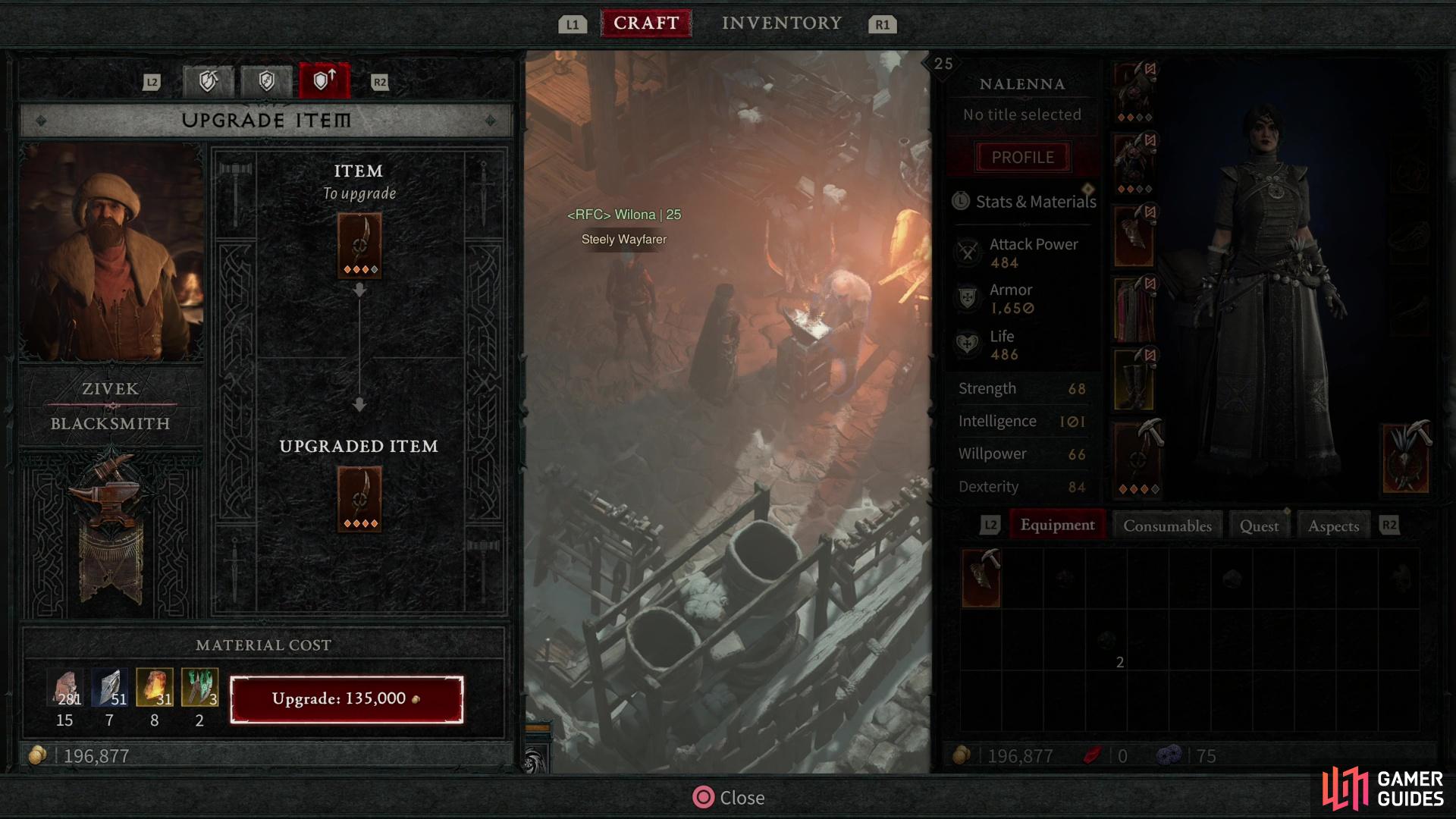Blacksmiths have been longtime allies of Diablo protagonists, often to their own detriment. In the first Diablo you had Griswold, who deserved a better fate, in Diablo 2 you had a variable cast of blacksmiths offering aid, from Charsi to Larzuk, and in Diablo 3 there was Haedrig (help me!). Diablo 4 is back to a changing cast of NPCs offering the same slew of blacksmithing services, including salvaging unwanted gear, repairing damage equipment, and upgrading items. This page will cover all the services the blacksmith provides in Diablo 4.
How to Unlock the Blacksmith in Diablo 4¶
The blacksmith is a bit of an odd vendor in Diablo 4. You should be able to use their services to salvage gear the first time you find one - the earliest will be in ![]() Kyovashad. To fully unlock all the blacksmith’s services, however, you’ll need to hit Lv10, at which point you’ll be given a tutorial quest to go talk to the blacksmith in Kyovashad, a guy named Zivek, at which point you’ll unlock access to the other services offered by blacksmiths - repairing and upgrading items.
Kyovashad. To fully unlock all the blacksmith’s services, however, you’ll need to hit Lv10, at which point you’ll be given a tutorial quest to go talk to the blacksmith in Kyovashad, a guy named Zivek, at which point you’ll unlock access to the other services offered by blacksmiths - repairing and upgrading items.
(1 of 2) You can salvage unwanted gear free of charge at the blacksmith.
You can salvage unwanted gear free of charge at the blacksmith. (left), Salvaging gear will yield resources which can be used to upgrade other gear, as well as transmog options. (right)
How to Salvage Items in Diablo 4¶
Easily the most common service you’ll use the blacksmith for, salvaging allows you to break down unwanted gear into various useful resources. This service is free, but will naturally destroy the gear you’re choosing to break down, converting it into a semi-random array of resources. What resources a particular bit of gear will yield depends on the type (weapon, armor or jewelry) and the rarity, but a good rule of thumb is that salvaging a piece of gear usually gets you the resources needed to upgrade the same type and quality of gear. For example, breaking down legendary weapons can score you ![]() Baleful Fragments, which you need to upgrade legendary weapons. Salvaging allows outdated or inferior gear to contribute to upgrading superior gear, but you probably want to save the rarer resources for upgrading late-game gear. Also, keep in mind that salvaged gear cannot be sold, so your trash gear can either earn you some gold, or resources, not both. At some point, however, you’ll probably have enough lower-tier resources, allowing you to sell common and magical items, scrapping only rare and legendary gear.
Baleful Fragments, which you need to upgrade legendary weapons. Salvaging allows outdated or inferior gear to contribute to upgrading superior gear, but you probably want to save the rarer resources for upgrading late-game gear. Also, keep in mind that salvaged gear cannot be sold, so your trash gear can either earn you some gold, or resources, not both. At some point, however, you’ll probably have enough lower-tier resources, allowing you to sell common and magical items, scrapping only rare and legendary gear.
When you die, your gear’s durability will be reduced. Repair damaged gear at the blacksmith - it’s basically a death tax.
How to Repair Gear in Diablo 4¶
Durability returns in Diablo 4, serving almost exclusively as a death penalty. When you die, your gear will lose some durability, eventually necessitating repairs lest your equipment ends up rendered useless. On Veteran difficulty, this shouldn’t be a serious issue - you probably won’t be dying all that much, and even if you do, low-level gear, even legendaries, are pretty cheap to repair. This service will unlock at Lv10, just visit the blacksmith and navigate to the “Repair” tab, where you can choose to repair a single item, all equipped gear, or everything you currently possess.
You can upgrade gear by expending resources gained by salvaging.
How to Upgrade Gear in Diablo 4¶
Salvaging unwanted gear gets you resources, and you can use these resources to upgrade more promising equipment. As mentioned earlier, the ability to upgrade gear unlocks at Lv10 - just talk to the blacksmith and you’ll be able to navigate to the “Upgrade Gear” tab. Upgrading gear will increase that gear’s core stats (Attack Power and Armor) as well as the effects of any modifiers that gear may have. Each upgrade yields relatively minor results - trivial, even - but fully upgrading a bit of gear can help you get an edge, especially considering the cumulative results of upgrading multiple items repeatedly.
The amount of gold and resources upgrading requires varies based on the quality and type of the gear, and these costs increase significantly the more times you upgrade a single piece of gear. Generally the first two upgrades are fairly cheap, but the last two are expensive enough that, frankly, unless you’re upgrading end-game gear, you’re probably better off just waiting for something better to drop. As mentioned earlier, the resources gained from salvaging a specific type and rarity of equipment tends to match what’s needed to upgrade another item of the same type and rarity. If you need to upgrade rare armor, you’ll need to break down rare armor, for example. Resources can also be dropped by enemies or extracted from the environment.





 Sign up
Sign up
No Comments